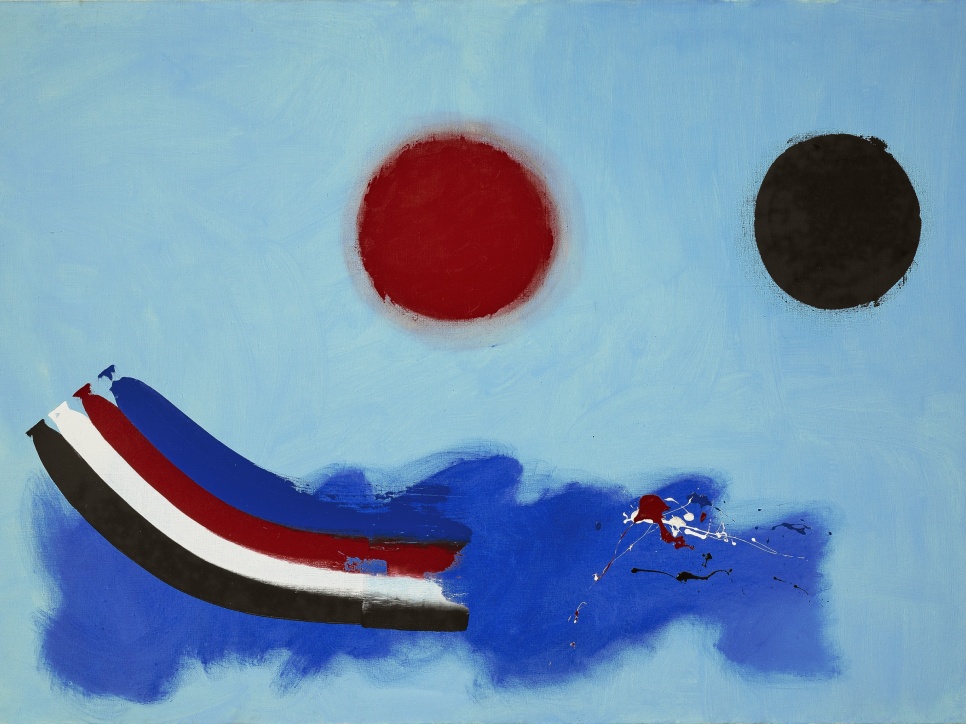
Ed Clark was an African-American painter mostly known for his vibrant use of color and elliptical-shaped canvases. Born on May 6, 1926 in the Storyville section of New Orleans, Louisiana, Clark grew up in Baton Rouge and later moved to Chicago in 1933. In 1943, he joined the United States Air Corps and served in Guam during World War II. Shortly after his return to the U.S., Clark enrolled at the Art Institute of Chicago in 1947 where he studied traditional painting until 1951 as a veteran under the GI Bill. He continued his studies in Paris at the Académie de la Grande Chaumière in 1952, where Clark remained even after his GI Bill expired, as he felt it epitomized a society in which the color of his skin was less likely to determine his artistic career. In regards to Paris, Clark has stated, “[Paris was the] …freest of cities and a true magnet for artists. We would meet among artists of all countries, with no distinction of class, race or political ideology. We were artists, nothing else.”Although he returned to America in 1957, Clark’s years in Paris would come to inform his work for the rest of his career, and he would return periodically throughout his life.
Clark is credited as the first painter known to work on a shaped canvas, an innovation that was extremely radical during the 1950s and ‘60s. His first shaped painting was exhibited in 1957 at the Brata Gallery in New York, a cooperative gallery of which Clark was a charter member. A decade later in 1968, while living in Claude Monet’s first home in Vétheuil, France, he painted his first oval painting, now his most famous shape. The majority of the works in his oeuvre were executed on the floor, in homage to Jackson Pollock and his drip paintings. The key difference is Clark’s use of a push broom, a tool that became his signature. In adopting the push broom, Clark was able to imbue his paintings with a unique sense of speed and monumentality, creating distinctive records of the joy he possessed in the act of painting.
The artist’s work is included in the permanent collections of several important cultural institutions, including the Art Institute of Chicago; the Detroit Institute of the Arts; the Studio Museum in Harlem, New York; the Metropolitan Museum of Art, New York; the Museum of Modern Art, New York; and the Pérez Art Museum, Miami, among others.
Ed Clark passed away on October 19, 2019 at the age of 93 in Detroit, Michigan.